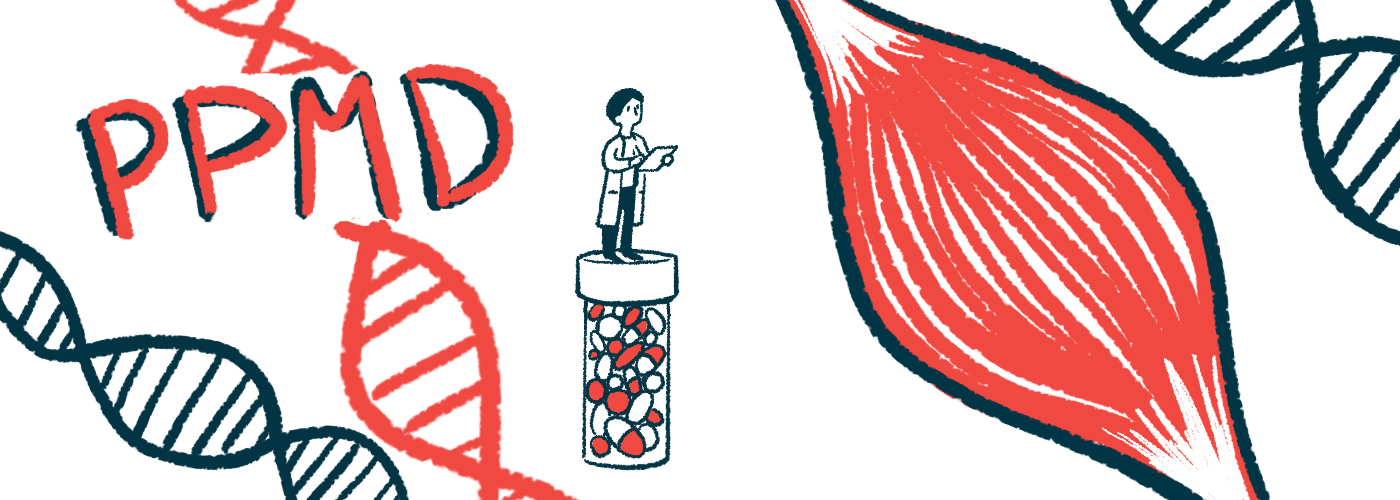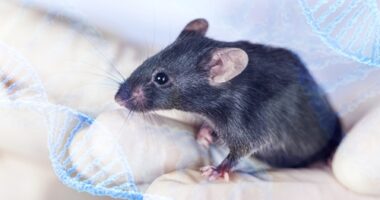PPMD 2024: Trials due for DMD gene therapies, cell regeneration
PPMD-funded studies were highlighted at last month's conference

In its 30-year history, Parent Project Muscular Dystrophy (PPMD) has helped fund the development of many experimental treatments for Duchenne muscular dystrophy (DMD) and some of these are about to be tested in clinical trials.
Several of these up and coming treatments, including strategies for gene therapy and approaches to regenerate muscle cells, were showcased at the PPMD’s conference last week in the session “Moving the Needle.”
DMD is caused by mutations in the gene that encodes dystrophin, a protein essential for maintaining muscle health. One of the most highly anticipated treatment strategies for DMD is gene therapy, which is designed to deliver a healthy version of the dystrophin gene to muscle cells.
Gene therapies usually use specially engineered viruses, called vectors, to deliver their genetic payload. A problem with this strategy in DMD is that the dystrophin gene is massive, the full gene is too big to fit inside the viral vectors.
To get around this, some gene therapies, such as Elevidys (delandistrogene moxeparvovec-rokl), which was recently authorized in the U.S. most DMD patients ages 4 and older, deliver a gene that encodes mini-dystrophin, a shortened, but functional version of the protein.
Kinea Bio is pioneering a strategy that takes advantage of molecules called inteins to deliver a larger version of dystrophin, called midi-dystrophin. One midi-dystrophin is “essentially two micro-dystrophin put together,” according to Kinea CEO Casey Childers, DO, PhD.
Inteins function like molecular Velcro. By attaching inteins to two different proteins, the two proteins can be stuck together. Kinea’s gene therapy, called KNA-123, uses two viral vectors that each encode a piece of the midi-dystrophin protein attached to inteins, allowing the production of a full-length midi-dystrophin once both vectors have delivered their cargo to the muscle cell.
In mouse experiments, this two-component gene therapy strategy has shown much greater potency than mini-dystrophin approaches. Kinea is now working to bring the treatment toward clinical tests.
“The midi-dystrophin outperforms [micro-dystrophin] by at least a tenfold lower dose. So we can reduce the dose by tenfold [and] achieve superior effects,” Childers said.
The thing about antibodies
Another limitation of gene therapies that use viral vectors is that some people have preexisting antibodies that can block the therapy from working. According to University of Florida professor Barry Byrne, MD, PhD, as many as one in three DMD patients has antibodies that would render them ineligible for gene therapies like Elevidys. Plus, pretty much everyone who has gene therapy develops anti-vector antibodies, so as a rule these therapies can only be given once.
“The antibodies can completely block the therapeutic effect of the” gene therapy, Byrne said. “Because of that, we want the lowest level of antibody [when gene therapy is administered] possible.”
One way to lower antibody levels is to use medications like efgartigimod alfa, which is approved as Vygart for myasthenia gravis, an antibody-driven autoimmune disease. Efgartigimod blocks a process that normally helps prevent antibodies from being degraded, thus speeding up their destruction.
In work funded by PPMD and other patient advocacy organizations, Byrne and his colleagues are conducting a pilot clinical trial to test this approach in a dozen boys with DMD who have antibodies against the vector in Elevidys. The study is designed to include six boys who have preoccurring antibodies and six who developed antibodies after gene therapy.
The study will start in preselected patients known to have high antibody levels, but researchers may “be able to expand this study for clinical use” now that Elevidys is more widely approved, said Byrne, who is one of a number of researchers exploring techniques to deplete only the antibodies that interfere with gene therapies since treatments like efgartigimod would also reduce those that help protect against infections.
Research in muscle cell regeneration
Other work funded by PPMD seeks to improve the regeneration of new muscle fibers with DMD. When muscles are damaged, muscle stem cells normally spring into action, making new muscle fibers to replace damaged ones. But this process is dysfunctional in people with DMD, data suggest.
“The problem we identified is that in the bodies of individuals with Duchenne … their stem cells are not creating new muscle cells efficiently,” said Frank Gleeson, co-counder and CEO of Satellos Bioscience, which is pioneering one approach to increase muscle fiber regeneration.
Over more than half a decade of research, Satellos has developed a molecule that can promote muscle cells’ regenerative abilities. The therapy can be taken as a pill and has already shown promise at improving muscle regeneration in DMD mouse and dog models. Since it acts independently of dystrophin, the approach could be used on its own or as an add-on to dystrophin-targeting treatments like gene therapy, Gleeson said.
Satellos is planning this year to launch a Phase 1 trial to test the safety of SAT-3247, a tablet formulation of the molecule, in healthy volunteers. If all goes well, it hopes to start testing in DMD.
“This year and early next year, we will begin in patients, in Duchenne patients. Our plan as we move along is to do separate studies, both in ambulatory children and in adolescents and young adults that are nonambulatory,” Gleeson said, noting more details will be posted on the company’s website once they’re available.
Another muscle regeneration approach funded by PPMD is MyoPAXon, being developed by Myogenica. Instead of using an oral molecule to promote a patient’s own stem cells to grow, MyoPAXon would deliver healthy muscle stem cells into a patient. The therapy uses muscle stem cells generated from stem cells in human umbilical cord blood.
“Even if you are able to induce muscle regeneration in a genetic disease like Duchenne … the muscle fibers that will be formed from this regeneration … still will be mutant. It still will be lacking dystrophin,” said Rita Perlingeiro, PhD, co-founder of Myogenica. MyoPAXon seeks to supply muscle stem cells that can make healthy muscle fibers with intact dystrophin.
Perlingeiro and other scientists have worked for years to perfect the process for growing human muscle stem cells and have stored up billions of cells for clinical testing. Just last month, the U.S. Food and Drug Administration (FDA) OK’d Myogenica to start a first-in-human trial, which will enroll adults with DMD who can no longer walk. The participants will receive a single injection of MyoPAXon cells into a foot muscle, which will be analyzed three months later.
The study’s main goal will be to evaluate the treatment’s safety. If it goes well, Perlingeiro said participants in the trial may be able later to receive injections into other muscles.
Other PPMD-funded projects
PPMD has also funded basic science to better understand the underlying biology of DMD. One project, led by Stan Nelson, MD, at the University of California, Los Angeles, is using detailed analyses from muscle biopsies to assess how DMD affect cells, not just muscle cells, but all the structural and immune cells in muscle tissue.
“Our goal at the end of the day is to identify new biomarkers and new therapeutic insights for how to augment things like dystrophin replacement or improving [muscle stem cell] function,” Nelson said. “This type of data intelligently lets us know how we’re going to be [combining] some of these therapies.”
The project has already yielded insights that may help advance new treatment strategies. For example, Nelson and his colleagues have identified a specific group of fibroblasts, cells involved in scarring, in DMD muscle that are strikingly similar to fibroblasts in joints of people with arthritis. This finding suggests that treatments for arthritis may be able to be repurposed for Duchenne, according to Nelson, who said research is ongoing, including that which seeks to look at biopsies from DMD patients who’ve received gene therapy treatments.
Note: The Muscular Dystrophy News Today team is providing virtual coverage of the Parent Project Muscular Dystrophy Annual Conference (PPMD) June 27-29. Go here to see the latest stories from the conference.








